Why bees? 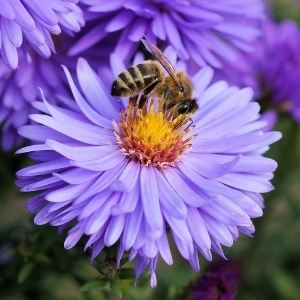
I’m going to focus heavily on supporting pollinating bees in this blog, though we welcome all kinds of pollinators in our gardens. Butterflies, moths, hummingbirds, wasps, flies, hoverflies, mosquitoes, ants, beetles and even bats all play important roles in pollinating our flowers, fruits, vegetables and herbs.
Of all those kinds of pollinators, bees—especially native bees–are the most efficient and have the greatest impact when it comes to increasing the harvest of fruits and vegetables from our gardens. Without them, many flowering plants won’t set seed or fruit, and without flowers, there’s no food for the bees. It’s a catch-22. Did you know that sweat bees are especially good at pollinating strawberries or that it takes just 2-3 mason bees to pollinate an entire fruit tree?
So, how can you make pollinators happy to “bee” in your garden? Here are five actionable ideas to help pollinators love your garden.
#1 – Provide a succession of blooms in every season.
Would you go to a restaurant that had run out of food? Of course you wouldn’t! Without a consistent supply of food for pollinators in your garden, they’ll go elsewhere. Help pollinators love your garden by making sure there is always something they enjoy in the nectar or pollen from in bloom. The greater variety of flowers you provide, the greater the variety of pollinators you’ll attract.
Bees are especially drawn to blue, purple and yellow flowers. Single, flat-shaped ones like daisies provide a comfortable place to land and easy access to pollen. Bees that have long tongues will probe into flowers with tubular parts like annual and perennial salvias, bee balm, catmint and zinnias.
I’ll show you ten plants bees love so you can create a succession of bloom through every part of the growing season. This isn’t an exhaustive list, but you can use our Advanced Search tool to find more.
SPRING 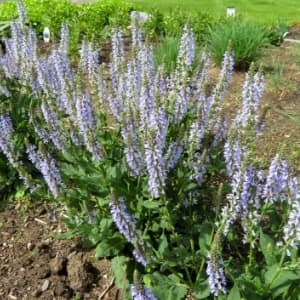
- Sweet alyssum
- African daisy
- False indigo
- Bleeding heart
- Perennial salvia
- Tiarella
- Ninebark
- Elderberry
- Viburnum
- Weigela
SUMMER 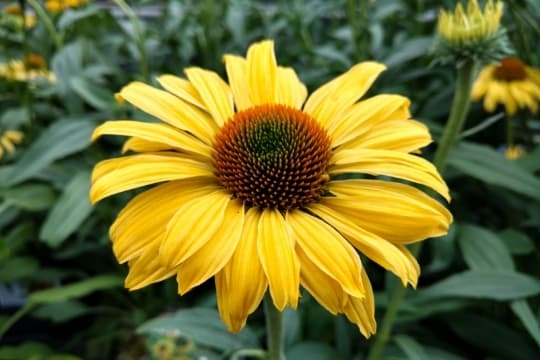
FALL 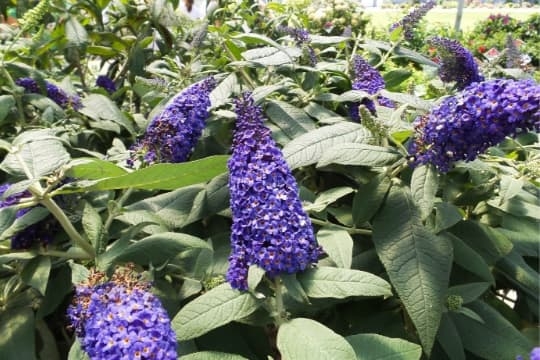
- Dahlias
- Japanese Anemone
- Aster
- Cimicifuga
- Gaillardia
- Hibiscus
- Rudbeckia
- Sedum
- Butterfly bush
- Bluebeard
#2 – Plant flowers pollinators love in groups. 
Bees and other pollinators know there’s a limited amount of time in every day to get the nutrition they need to survive. When it comes to finding a good place to land for lunch, they’re more likely to choose a large clump of black-eyed Susans than a single specimen. To help pollinators love your garden, plant annuals and perennials in groups to make it worth their while to stop by.
More bee-friendly plants that look best when planted in larger groupings are: sweet alyssum, hyssop, milkweed, asters, coreopsis, foam flowers, phlox, anemones and zinnias.
#3 – Allow a few plants in your veggie garden to bolt. 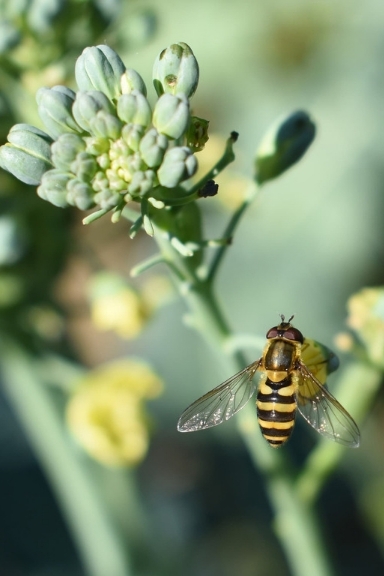
If you’re growing more broccoli than your kids will ever eat, or once you’ve harvested enough dill to last a lifetime, let a few plants bolt (go into bloom.) The bees will thank you! They will be happy to pollinate those flowers for you so the plants can set seed. Same goes for your cilantro, chives and mint. Who doesn’t ever have enough mint to go around? Be fair and share.
#4 – Provide a safe water source for pollinators. 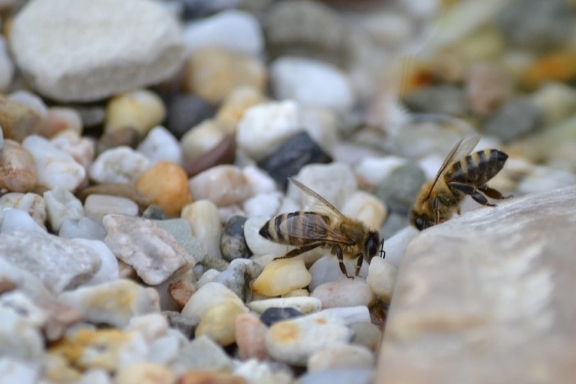
Bees, butterflies and other pollinators need water to survive, just like we do. Many of us have a bird bath in our garden, but we might forget to put out a smaller one for these little creatures. Bird baths are too deep for bees and butterflies to safely drink from. They prefer a water-filled pebble tray or a shallow bowl, preferably with something to perch on, to drink from. Even plants with cupped leaves like ‘Abiqua Drinking Gourd’ hosta will work. Be sure to change the water in them often.
#5 – Create a “wild” habitat for pollinators. 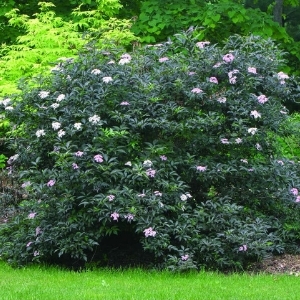
If you’re the kind of gardener who likes to keep things neat and tidy all the time, you might find this last one a bit challenging: it’s good to keep parts of our garden a little “wild.” Native bees and other pollinators use brush piles, dry grasses, dead wood and undisturbed spaces for nesting and shelter. Open, muddy ground is essential for mason bees building nests.
It’s like this. When I was growing up, I loved to ride my bike to my friend Katie’s* house. She made me laugh and she had a pool we played in all summer long. Her mother always kept the house immaculately clean, so we spent most of our time outside. Katie’s house was like a show garden filled with beautiful flowers. It was a great place to visit, but I never wanted to live there. Bees feel kind of the same way about gardens with no “wild” spaces. (*Name changed to protect the innocent!)
An easy way to create a backdrop habitat for pollinators is by planting large, flowering shrubs along the back of your property line or at the woods’ edge. A few good candidates for those kinds of spaces include viburnum, elderberry, ninebark, buttonbush and dogwood shrubs.
A healthy, bountiful garden depends on pollinators. How will you do your part to support them this season?

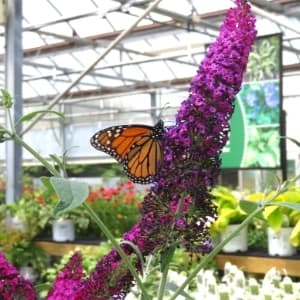
4 thoughts on “5 Ways to Help Pollinators Love Your Garden”
Do you have your top 10 plants for hummingbirds
There isn’t an official list of Top 10 for hummingbirds, but i can tell you some great plants.
Salvia, Cuphea, Lantana, Fuchsia, Monarda, Hyssop, Foxglove to name a few. They really enjoy ‘tubular’ flowers.
Okay, I have a question. After a pollinators has visited a flower, does the flower produce more necter or is it done?
Nectar is produced as long as the flower is open.